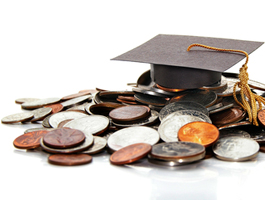Direct deposit
The Government of Canada will increase the use of direct deposit by phasing out federal government cheques by April 2016.
Why choose direct deposit payments?
- Convenient—Faster access to your money. There is no risk of your money being held up as a result of unforeseen delivery issues.
- Reliable—Your payment will always be on time, and your money can begin to earn interest right away.
- Secure—Direct deposit is fast, reliable and safe. There is virtually no risk of your payment being lost, stolen or damaged.
- Low-cost—With fewer cheques to print and mail, we are saving Canadian taxpayers' money. The cost to produce a cheque is approximately 82 cents while a direct deposit payment costs about 13 cents.
Myths vs. facts about direct deposit
Myth: I'll always be able to get a cheque from the Government of Canada and have it mailed to me.
Fact: More and more Canadians are using direct deposit. The Government of Canada is committed to using taxpayer dollars wisely and increasing the use of direct deposit by phasing out cheques by April 2016. This transition will contribute significant savings through the reduction in the use of paper and related cheque-printing and delivery costs.
Myth: When I sign up for direct deposit and give my banking information, the Canada Revenue Agency (CRA) can also use this information to take any money I may owe from my bank account.
Fact: If you owe money to the CRA, giving your banking information will not trigger the process of withdrawing money from your bank account. When you register for direct deposit, you do not authorize the CRA to withdraw money from your bank account. When a taxpayer owes money to the CRA and must make payments, the CRA works with the taxpayer to come to an agreement. The CRA can only withdraw money from a taxpayer’s account when a garnishment is in place. A garnishment is a legal procedure to withdraw money from a bank account.
Myth: My banking information may not be safe if I sign up for direct deposit.
Fact: The CRA uses the same high levels of security that financial institutions use to protect your banking information. Go to Security for more information about security and the CRA.
Are you moving?
If you move, let us know your new address as soon as possible. Otherwise, your payments may stop, whether you receive them by cheque or direct deposit.
Are you changing your bank account information?
If you are changing any bank account held in Canada into which we deposit a payment, be sure to tell us about your new bank account. In addition, do not close the old bank account before we deposit the payment into the new bank account.
If your financial institution in Canada notifies us of a change in your banking information, we will deposit your payments into the new bank account.
Individuals
Only one form to fill out and you’re done! The Government will deposit all payments from different federal departments directly in your bank account.Online
If you are registered for My Account, you can sign up for direct deposit now. If you are not yet registered, find out how using My Account can help you quickly and easily manage your tax affairs online.By mail
Follow these two easy steps to sign up for direct deposit:- Fill out the Direct Deposit Enrolment Form.
- Mail it to the address indicated on the form.
By phone
To sign up for direct deposit, or change your banking information, call 1-800-959-8281.Video - Direct deposit for individuals:
Current position:00:00:00
Total time:--:--:--
Playback percentage:
video (1:00 min.) | Alternative formats and transcript
Businesses
Follow these two easy steps to sign up for direct deposit:- Fill out RC366, Direct Deposit Request for Businesses.
- Mail it to one of the tax centres.
Suppliers
Follow these two easy steps to sign up for direct deposit for accounts receivable:- Fill out Form RC231, Vendor Electronic Payment Registration Request.
- Mail the form and a void cheque to the address on the form.


 For a number of people seeking student loan debt relief, bankruptcy might seem like the only debt solution. But is it, really?
For a number of people seeking student loan debt relief, bankruptcy might seem like the only debt solution. But is it, really? If you have filed for bankruptcy, then you are far from alone. Even though it can be very disheartening and stressful, it is by no means the end of the world, nor the end of your credit worthiness. If you plan carefully and learn to manage your money better, you will be able to improve your credit score and qualify for a loan sooner than you think.
If you have filed for bankruptcy, then you are far from alone. Even though it can be very disheartening and stressful, it is by no means the end of the world, nor the end of your credit worthiness. If you plan carefully and learn to manage your money better, you will be able to improve your credit score and qualify for a loan sooner than you think.


